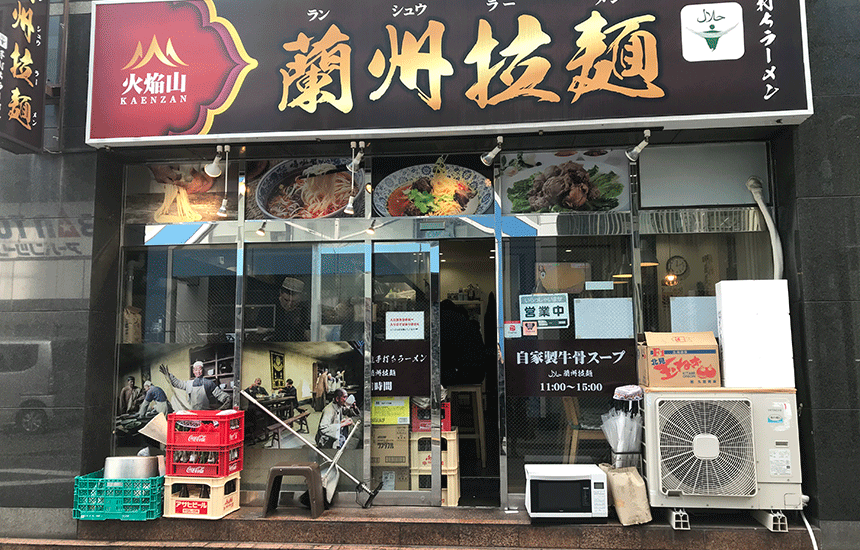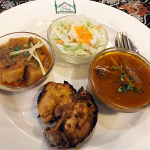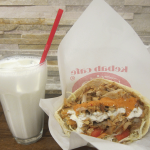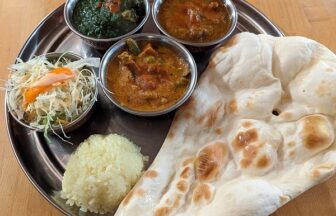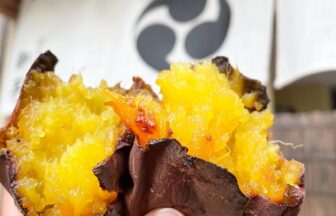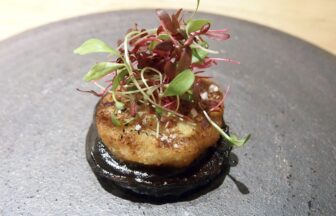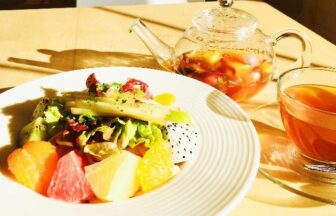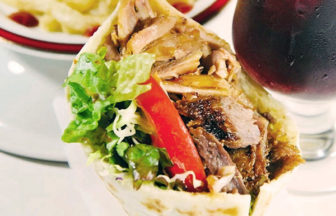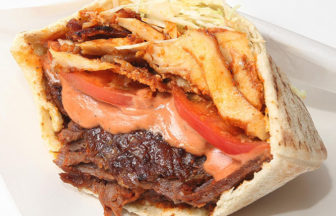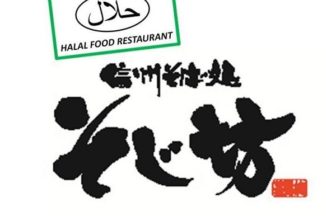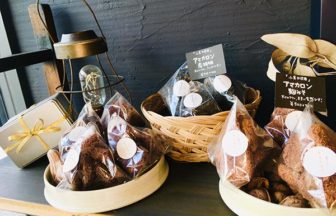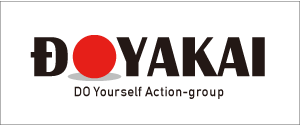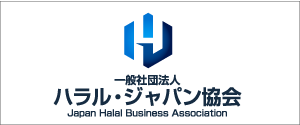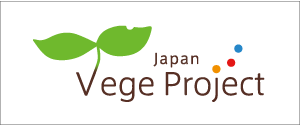Lanzhou ramen; choose your favorite noodle from thin noodles, flat noodles, triangle noodles
Lanzhou Ramen is a noodle dish originating from Lanzhou City, Gansu Province, China.
Chinese restrunt Kaenzan in Kita-Ikebukuro is a must-have popular shop. It drived the Lanzhou ramen boom in Japan.
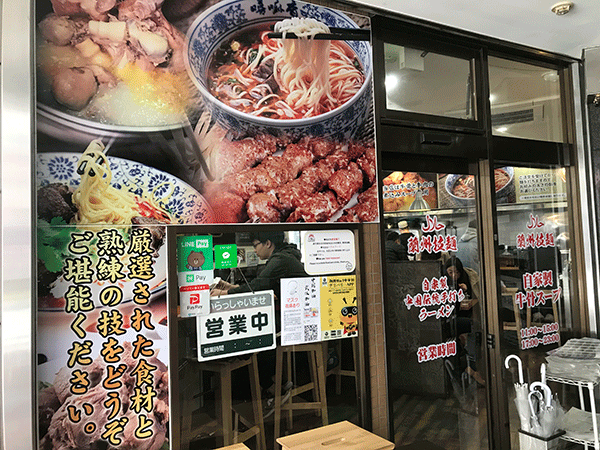
Store entrance
The most popular menue hiere is “Lanzhou ramen with Chinese medicine”
The beef bone and beef is stewed, but the soup is beautifuly transparent. Bright red-chili oil is blended with 26 kinds of Chinese herbs and spices. Toppings are sliced radish, beef, and plenty of pacchi.
Noodles can be selected from thin noodles, flat noodles, and triangle noodles. The shape of the noodles changes the texture of the dish. You can customize your one-and-only favorit ramen.
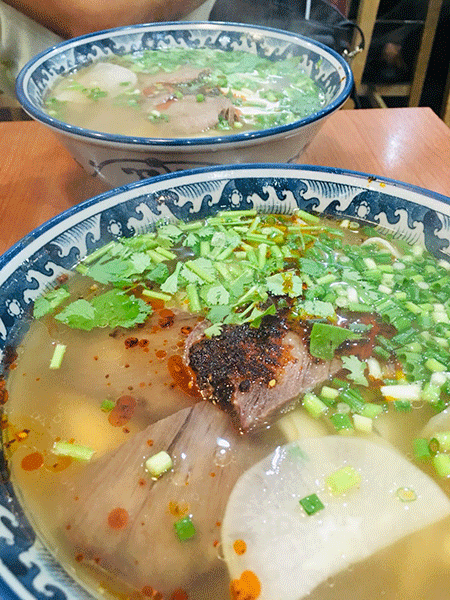
Lanzhou ramen with Chinese medicine ¥980

Thick noodles of beef noodles
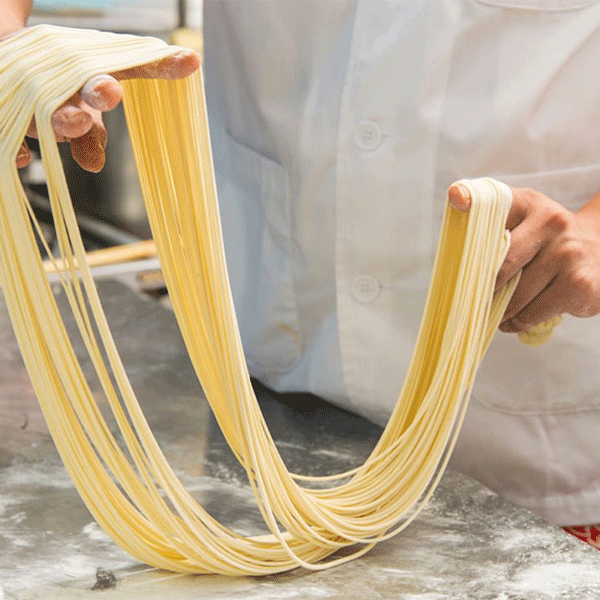
Handmade noodles of craftsmanship
After the order is placed,the chef starts to make the noodles. This makes the noddles very resilient and tasty. The beef bone soup and the flavors of pepper and spices are intertwined in an intricate manner, making for an exquisite taste.
After the meal, the Chinese herbal soup soaks into the body and warms you up. It is said that herbs are blended with spices to help digestion and grasses that act on the spleen and stomach to warm the body.
Because it is a medicinal ramen, it is also recommended for health-conscious or sensitive to cold.
Tuesday deals! The lineup of Chinese-style snacks that surpasses ramen restaurants! Also a great match for Shaoxing Sake
There are many types of ramen in Kaensan, but side menues and snack menues are also delicious.
One thing you should definitely try, is skewer of lamb. Spicy flavor is perfect for beer.

Xinjiang lamb skewers ¥280
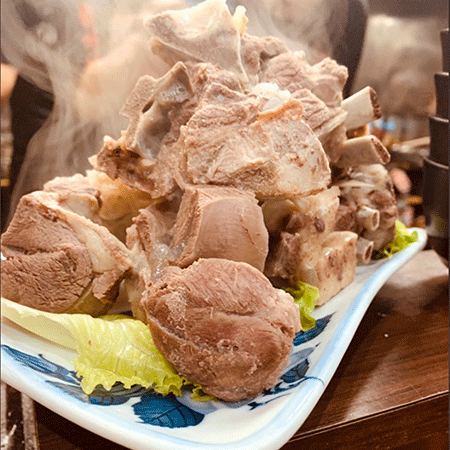
Xinjiang-style lamb meat with pepper and Mahler flavored ¥1,880
You can’t miss the vigorous lamb’s pepper and the grilled offal/tripe of sheep, which are rare. Of course its all halal!
You can also to-go/take out gizzards, sheep’s tongue spices, sheep’s motsu(offal/tripe), and ryampi.
Kaenzan have great deal on every Tuesday, when you can eat popular menus for one coin (500 yen).
Tweets by WqxrsF
Kaenzan is the setting of Saiyuki in Xinjiang Uygur Autonomous Region. Open to the motto of understanding religion and respecting each other.
The name of the store, “Kaenzan,” is derived from the red rock mountain in Xinjiang Uygur Autonomous Region, which became famous for being a model of Saiyuki.
The northwestern part of China is home to many Muslims, including ethnic minorities, Uyghurs and Kazakhs.
What is eaten in this area is called “Keishin cuisine,” which uses halal ingredients. Lanzhou ramen is also one of the “Keishin cuisine” dishes.
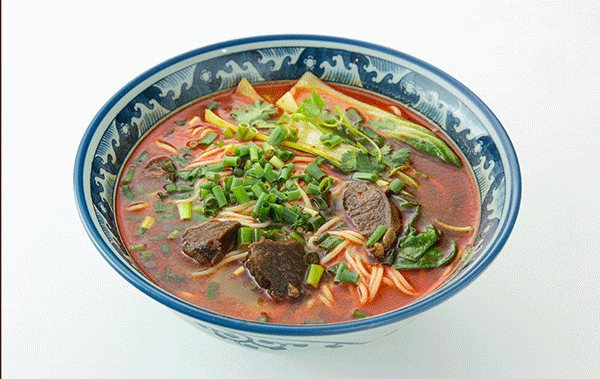
Steamed beef noodle ¥ 980

Yakisoba sweet and spicy ¥ 1,180
It is said that the owner of Kaenzan, was a Muslim from the Hui family and opened the shop with the desire to eat delicious hometown flavors.
The shop’s employees are not Muslims, but their motto is to understand religion and respect each other.
Although they are not religiously Muslims, they all try to understand the meaning of halal. The ideology and desire to make a home-like-place where muslim people can chose and
eat, when they are in a different country, is commonly shared with the owner.
Supervisor / Recommender

- Halal Supervisor and Foreigner Food Coordinator (Cooking, Consulting, Public Relations)
-
Click here for introduction
I currently work as an editor, but my previous job was as a chef, with many years of experience working in hospitals, restaurants, and the food service industry. Looking back, I think my connection to halal may have already been there.
Decades ago, I once worked in a cafeteria at an auction venue. Over 60% of the visitors were foreigners. Many Muslims were present, and the venue had a mosque-like prayer space. I remember being frequently asked questions about whether the meat was halal and what kind of meat it was. At certain times, the cafeteria would become as lively as a festival. The Indian restaurant next door would generously serve free biryani, curry, and sweet drinks to everyone who came. Over 100 people, including people wearing bright red turbans, galabeyas, and traditional attire, gathered in the cafeteria, all sitting around the same table and enjoying a truly enjoyable time. Looking back, it was iftar, the end of fasting, and I understand the significance of sharing, but at the time I was ignorant of halal and Islam, and didn't even consider how to respond. They only ate the curry made by the Indians in the restaurant. As I studied halal, I realized, "I wanted to eat Japanese food, but I couldn't." I regret not doing anything even though there was something I could have done.
If only it didn't contain pork! If only it didn't contain wheat or buckwheat! I could eat it... Food insecurity is different for each person.
That's why I think it's important to learn about the differences in culture, religion, and lifestyle that underlie it, and to create an environment where everyone can enjoy delicious meals in comfort.
The desire for delicious, safe, and secure food is universal. The times are calling for people to live in new ways that transcend borders and religions. I hope that halal can be a gateway to eliminating food insecurity, contributing even in some small way to a society where people can coexist and prosper with more liberal thinking, and to global harmony beyond.
Latest entries
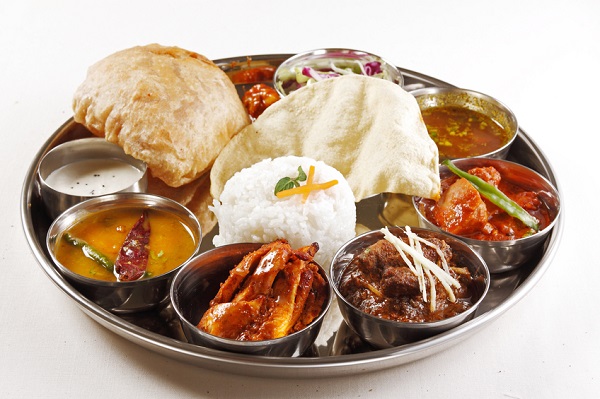 Tokyo2023年11月4日Dakshin South Indian Restaurant Otemachi Branch
Tokyo2023年11月4日Dakshin South Indian Restaurant Otemachi Branch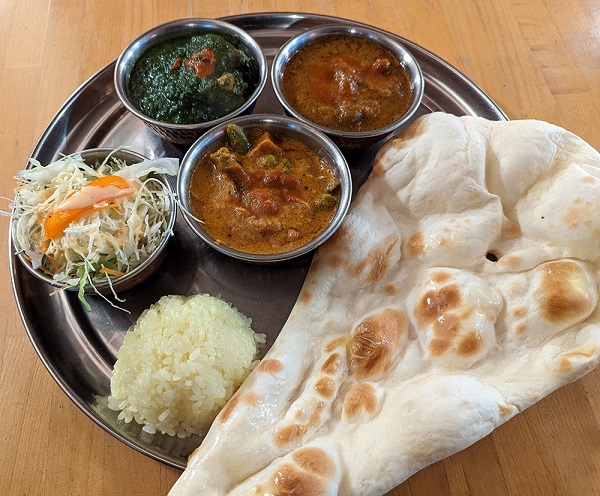 Tokyo2023年10月23日Gandhi Mahal
Tokyo2023年10月23日Gandhi Mahal Tokyo2023年10月23日Yıldız KEBAB
Tokyo2023年10月23日Yıldız KEBAB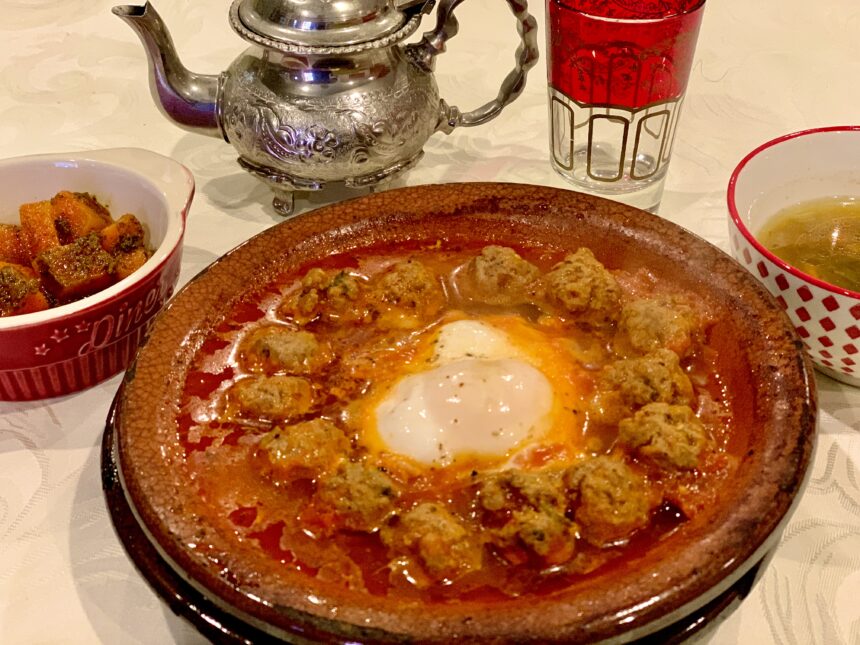 Tokyo2023年10月4日Restaurant Morocco
Tokyo2023年10月4日Restaurant Morocco

